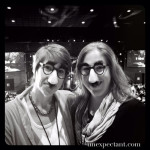“So what is Montessori exactly?”
“How is Montessori different than a traditional school?”
“Oh, Montessori is where the kids do whatever they want, right?”
When it came to Montessori, I’ll admit that I was clueless about its philosophies, methods and even pronunciation. After all, my husband and I both grew up attending traditional public schools. I had a preconceived notion that Montessori was a private-school opportunity for the affluent, which often resulted in the students being undisciplined, spoiled kids who did only what they wanted, when they wanted to. Then I volunteered at a homeless center in their Montessori preschool where I read to a child before naptime. Here were young kids from less-than-ideal backgrounds who were being responsible, independent and peaceful. These preschoolers ate with real plates, served themselves food from communal bowls, cleaned up afterwards and prepared a naptime spot for themselves. With all of the activity going on, the classroom remained organized and orderly. I quickly discovered that my previous notions were incorrect. I also realized that if I ever had the chance to send my kids to a Montessori school, I’d jump at it.
A year before our son entered preschool, our public school system opened the first public Montessori school in our area. I was ecstatic. But I also had a lot to figure out, such as what exactly the Montessori style of learning was. I soon learned that it was created by Maria Montessori, an Italian physician and educator, who believed,
“Education is a natural process carried out by the human individual, and is acquired not by listening to words, but by experiences in the environment.”
That sounds great, right? But what exactly does it mean? Take a look at these examples for a better understanding:
Multi-age classrooms
Instead of classrooms being designed to teach just one age at a time, Montessori classes take a three-year approach. Early childhood classes include children ages three to six, lower elementary is for children ages six to nine, and so on. By doing this, it helps promote cooperative learning where older students act as role models for younger ones.
Concrete to abstract
Walk in to any Montessori classroom, and you’re sure to see shelves full of different works, as they are known. In early childhood classes, that may include a tray with beans to spoon from one container to the next, a tower of pink cubes or various colored beads that represent numbers one through 10. Odd as some of these works may seem, they are all designed to teach children abstract ideas through first using hands-on, concrete approaches. As the child progresses, the concrete more easily morph into abstract concepts. Those colored beads start as visual and tactile tools, but over time and with practice, they will eventually teach the abstract concepts of math.
No desks
Another obvious difference in Montessori classrooms is the design and layout. There are no rows of desks all facing a chalkboard (in fact, our kids refer to traditional schools as “desk” schools). Instead, there are small tables, reading nooks and rugs for children to work on the floor. There are often plants and pets, low lighting and sometimes soft music playing. A snack table and a ‘peace corner’ for children to resolve conflicts are also commonplace. Art supplies, pencils, scissors, papers, etc., are available for common use in doing work. Cleaning supplies, such as vacuums, spray cleaners, rags and dust cloths are easily accessible, so children can cleanup at the end of their work cycles.
Child-led education
In a Montessori classroom, a teacher does not lecture to the entire classroom. Instead students receive one-on-one presentations from their teachers and learn concepts according to their individual readiness. Deb Cyrier, Montessori facilitator at Marquette Primary Montessori Academy explained, “They discover concepts on their own. They own them as opposed to being told how to do something. It’s their own personal learning. There’s a joy and excitement that comes through that.”
She went on to say that through the child-led approach, students can explore their passions and interests in more depth. “The teacher could use dinosaurs to get your child interested in various subjects. For math, they would count the plates on the stegosaurus and they would measure the length. They read books on them and for geography study continents about where they came from.”
“But, we don’t follow a child off a cliff either,” Cyrier carefully noted. “The teacher’s ultimate responsibility is to make sure they are getting all the important areas. As observers, they have to follow through.”
Teacher as observer
As Cyrier said, teachers take the role of the observer because the Montessori classroom is child-centered, not teacher-centered education. Teachers act as guides, helping children explore the world at their own speed and developmental readiness.
Children as teachers
With the teacher as a guide, students are encouraged to take a more active role by acting as teachers themselves. “Children in a Montessori classroom have real world experience with working with others, rather than convoluted groups that are assigned by teachers,” Lisa Vukmirovich, teacher at Marquette, said. “For example, one child may really like a material (squaring chains perhaps) and want to teach another child the lesson. This kind of cooperation happens all of the time. Kids work on different things, but they are side-by-side in the classroom, with the freedom to speak to each other when they need to. In a traditional classroom, students are only allowed to speak when a teacher says it’s okay.”
The Montessori approach to education helps develop children’s confidence as they discover answers instead of being told to repeat information. Montessori is about creating a well-rounded person, it’s about allowing for curiosity and the space to discover. It’s about educating, not just the child, but the whole person. As Maria Montessori also said,
“The things he sees are not just remembered; they form a part of his soul.”
 Have you connected with me on social media? Find me on Twitter, Instagram and Facebook @mchurchwriter.
Have you connected with me on social media? Find me on Twitter, Instagram and Facebook @mchurchwriter.
{Photo credit: ©poplasen & ©wckiw (respectively) – Fotolia.com.}








